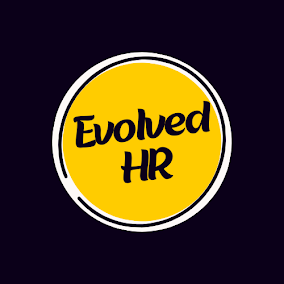AI in recruitment and talent acquisition is helping recruiters reduce time spent performing repetitive tasks such as sourcing candidates, screening resumes, and scheduling candidate interviews.
However, if the data used to train AI is inaccurate and vulnerable to bias.
FOR SELF STUDY: DOWNLOAD THE BOOK: LEARN ABOUT HR WITHOUT MBA
To avoid this scenario, select trustworthy vendors and programs which work to reduce bias rather than promote it.
Advance your career: as an HR Business Partner: Click here!
Machine Learning
Machine learning assists recruiters and HR teams by automating many manual tasks, freeing them up to focus on more strategic aspects of hiring. AI-powered tools, for instance, can sift through thousands of resumes quickly to identify unsuitable candidates or to generate shortlists based on candidate skills and job requirements.
AI tools can assist with eliminating unconscious bias during the hiring process by placing more focus on candidate skills instead of background or identity considerations, which makes evaluating diverse candidates easier for ML-powered tools.
HackerRank's AI-powered assessment platform uses machine learning (ML) to evaluate and recommend software engineers for hire. Since it launched, 40% of developers worldwide have been evaluated, producing scores for hard and soft skills such as cognitive ability, cultural fit, domain knowledge, communication ability and so forth - providing valuable data that allows engineers to evaluate potential candidates more easily for roles; additionally it creates a granular skill matrix to assess individual developer abilities.
Natural Language Processing (NLP)
With candidates communicating through emails, chatbots and social media platforms such as LinkedIn, the subtleties of language become ever more significant. Recruiters might use language that unintentionally signals gender preference or regional accent when writing job descriptions; NLP allows an AI engine to review these choices and suggest alternatives that are more impartial.
Sentiment analysis is one subset of NLP, used to analyze candidate responses to questions and help recruiters identify key qualifications such as communication skills and leadership styles. NLP can also be used to automate resume parsing and candidate screening to reduce screening times for talent.
Competition for talent can be fierce, so recruitment technology adoption has increased substantially in response. NLP should not be considered a silver bullet but should rather be integrated as part of your overall recruitment strategy; including using other tools like sourcing and pre-screening alongside AI.
Predictive Analysis
Instead of relying solely on gut feelings for making decisions about recruiting candidates, data-driven decisions based on predictive analysis models allow recruiters to make data-driven decisions - eliminating many of the biases associated with traditional recruitment techniques - resulting in better hires, higher productivity levels and more efficient sourcing processes.
Predictive analytics enable recruiters to identify the most promising candidates for specific roles, eliminating wasteful hiring due to mismatches or poor fits; this reduces time-to-hire, cost-per-hire and retention rates of new hires.
A good predictive model takes into account multiple inputs, such as education, age, psychometrics and performance history, in order to try and determine whether these variables correlate to future performance.
AI sourcing solutions that utilize predictive analytics models can quickly provide qualified candidates when job requisitions are posted, expediting the hiring process significantly. When coupled with other tools like OutMatch's candidate assessment solution, this helps identify top talent rapidly while supporting strategic business objectives.
Recommendation
Utilizing AI tools and software can ease some of the more tedious aspects of talent acquisition, including resume screening and candidate interactions, freeing recruiters up to focus on more important aspects such as sourcing skillsets and requirements for recruitment purposes.
AI can also help reduce unconscious bias during the selection process, often being more objective than human evaluations and screening candidates based on criteria that matter most for your company. AI may also be less affected by social stereotypes, regional accents or typos on applicants' resumes - factors which may unintentionally influence which candidates get chosen.
AI can help businesses create recommendations that will result in closer matches between their workforce needs and employees' abilities. Predictive analysis uses information like performance records, education levels, job histories and social media profiles as input. External sources such as U.S. Bureau of Labor Statistics job classifications or industry trends could also be considered factors.






.jpg)

.png)
No comments:
Post a Comment